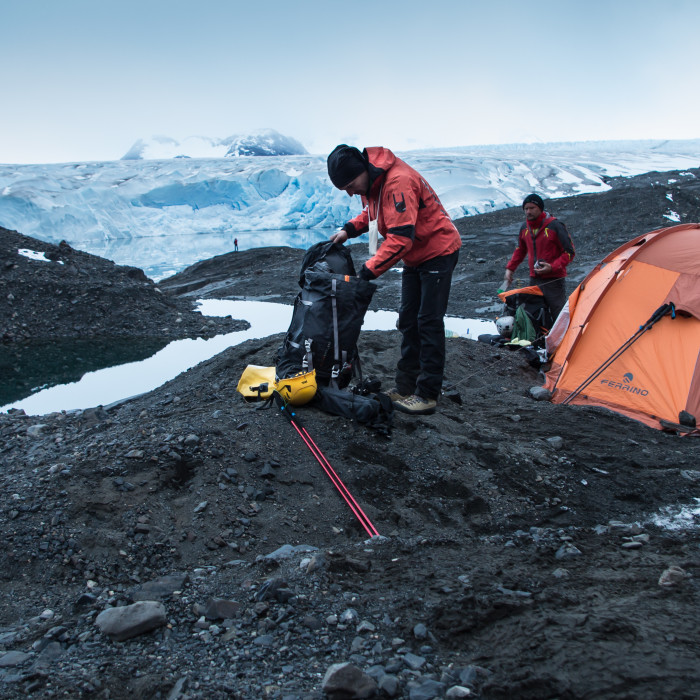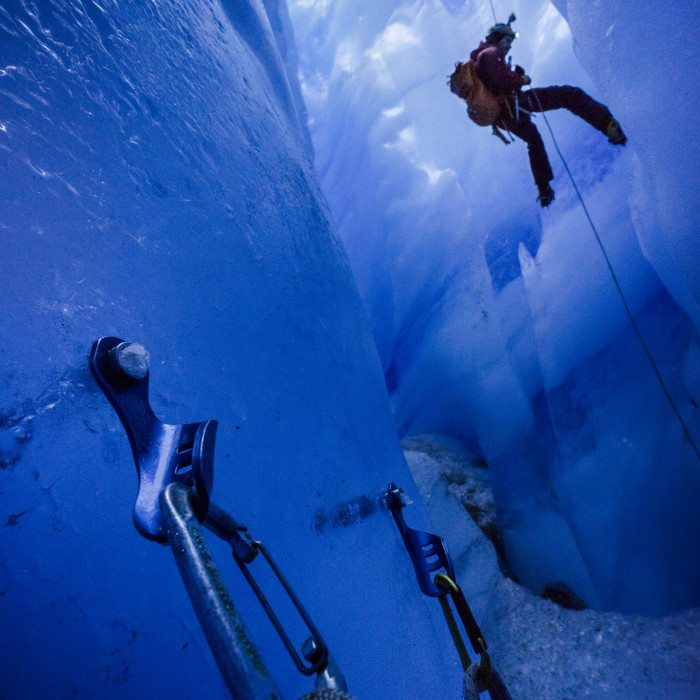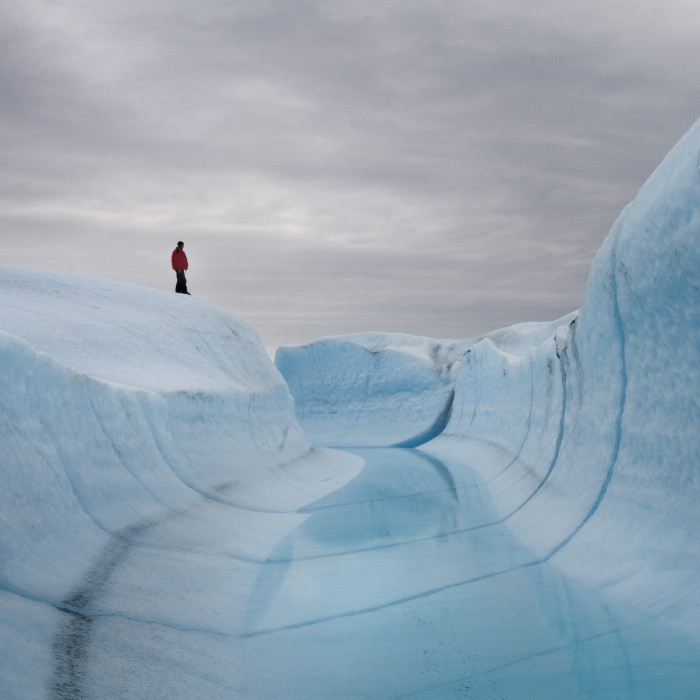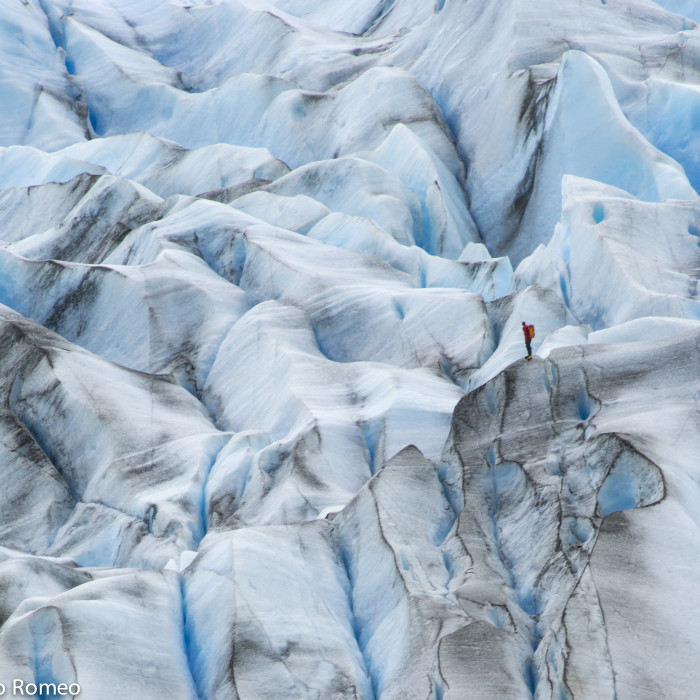
In the depths of the ice with La Venta
_634d52a9b3b71.jpg)
A journey combining exploration and research, an immersion into the cold heart of glaciers. La Venta takes us on a discovery of one of the most fragile ecosystems on our planet. Considered sterile by many, its ephemeral folds conceal a life with many questions yet to be answered.
We walk and climb on glaciers, but we hardly ever think of being able to dive inside to discover their hearts. And yet, since the mid-1980s, this has been the new adventure of speleology. A story that also has Italians among its protagonists, with the Associazione La Venta Esplorazioni Geografiche (La Venta Geographical Explorations Association), which precisely at that time began
its own journey into the glacial depths, with what was christened the "Ice Project". Curiosity in this direction was aroused by the swallow holes where the water disappeared from view to slip into cavities, channels and cracks in the ice.
Where does it end? How does this phenomenon develop, which over time would be known as glacial karst?
These were the questions that researchers asked themselves at the time. So several research groups decided to equip themselves with crampons and ice axes and set off to explore this cold underground world. Some went to the glacial masses of Svalbard, others to Greenland and Iceland. La Venta carries out an analysis that ranges from the Alps to the Tien Shan, reaching the Karakorum and landing on the extensive continental glaciers of Patagonia.
This journey, which combines research and exploration, is still in progress as there are still many secrets to be unveiled and concern all fields of science, at 360 degrees. We discussed this with Alessio Romeo, La Venta member and geologist.
How did you get to the exploration of glacial cavities?
The history of internal glacier exploration is a fascinating one, which has its roots in the last twenty years of the 19th century, when some forerunners of modern glaciology set out to explore
several sinkholes on the Mer de Glace, a glacier on the north side of Mont Blanc. On that occasion, they reached a depth of 60 metres, then everything stopped.
When did these exploratory expeditions start again?
From the mid-1970s onwards. The Italians began to carry out their first studies in 1982. It was Giovanni Badino, a founding member of La Venta and a famous speleologist, who in 1985, together with Leonardo Piccini and Mario Vianelli, started researching the Gorner Glacier.
You have returned to the Gorner several times with "Ice Project"...
It couldn't have been any other way! The Gorner is an enthusiast's paradise, a playground for glacial speleology. We have carried out more than twenty expeditions to this glacier and still continue to discover glacial mills and glacial karst formations.
This is due to the fact that it is an ephemeral phenomenon, which is constantly evolving.
What do you mean?
That glacial cavities, unlike those in rock, change seasonally and even weekly, and contrary to what was initially thought, the position of the mills changes over time and often some of them disappear. As the glacier masses shrink, the sedimentary cover, surface hydrology and ice fracturing change, and consequently the internal morphology of the glaciers changes. For this reason I have … defined the formations as an "ephemeral phenomenon". From the first studies to the present day, we have observed the glacier changing radically: today it lacks the contribution of what used to be many lateral glaciers and the surface has lowered by about 100 metres. Two events that have changedthe surface morphology and also the internal morphology.
"In the end it all starts with the visual component, the aesthetic appeal.
Whoever approaches speleo-glaciology does it initially for aesthetics, and
then gets hooked on the rest."
What do glaciers tell us as seen from the inside?
Basically, they have made us realise that exploration has limits. We can't go beyond a certain level because the cavities become narrower and narrower, or because we find ourselves in front of a siphon. A level full of water which, we discovered, does not only concern that point but is spread over a wider area. As if it were a groundwater level of the glacier, capable of providing useful information to understand the glacier's state of health. For example, in 2017, on Perito Moreno, in Argentina, we observed gushes of water on the glacial surface. These are pipelines, minimal passages, which at certain times are saturated with water. This phenomenon is becoming more frequent and accentuated over the years, a clear sign of the climate crisis we are experiencing.
Speaking of South America. Why did you choose to investigate both Alpine and Patagonian glaciers?
Patagonia was the second step in the “Ice Project”, but certainly the most fascinating and interesting one. You have the opportunity to study a glacier that is at sea level while in the Alps you are at least 2000 metres above sea level. Then, we are talking about glaciers that originate from a cap, not to mention the visual aspect. In the end it all starts with the visual component, the aesthetic appeal. Whoever approaches speleo-glaciology does it initially for aesthetics, and then gets hooked on the rest.
What was the greatest emotion, apart from the experience itself, that you experienced on these glaciers?
Seeing with our own eyes the blue of the Patagonian ice, a colour that we are still trying to explain. With Giovanni Badino, we have discussed hypotheses and dialogues about this bright, vivid colour. It exists only there.
New research into the interior of glaciers doesn't stop at exploring caves, does it?
Today, the search is no longer for the deepest caves, but for methods of investigation that will deepen our knowledge of the glacier and its environments. The aim is to extract as much useful information from the ice as possible, thus overcoming the natural limitations of exploration. Glaciology, biochemistry, microbiology and other sciences work together for a comprehensive discovery of the glacier.
At La Venta we would like to focus our future activity on multi-disciplinary investigations including biology, because what happens in caves is extremely fascinating. We are talking about isolated places
where many types of living beings proliferate, including bacteria that are adapted to using particular substances and minerals to live. The same thing happens in the glacier, which is why we are involving more and more microbiologists and biochemists.
So you're telling us that the glacier is not a sterile environment?
That's right. On most glaciers we find natural formations called cryoconites: pools of water with a dark sediment at the bottom. It contains microalgae, tardigrades, rotifers and many other animal and plant species, as well as pollutants from the atmosphere. A microscopic biome in what is, for many, a sterile environment, but in reality is not. Instead, it is a multi-disciplinary area, rich in opportunities for scientific research.
After so many years of research, objectives and places to investigate have certainly changed. What is one of the latest frontiers of speleo-glacial exploration?
Definitely Kyrgyzstan with the Inylchek Glacier, in the Tian Shan chain. This is the second longest mountain glacier in the world, at almost 60 kilometres. It was formed by the confluence of two other large glaciers: the Inylchek North and the Inylchek South. At the point where they converge, a lake forms, which periodically disappears, called the Merzbacher. The disappearance, which usually occurs between July and August, is extremely rapid. The process that leads to this emptying of the basin is still unknown, despite decades of research on the subject. This is certainly one of the researches we would like to pursue in the near future.
What will La Venta's next speleo-glacial expedition be?
Iceland with its glacial cavities linked to volcanic activity. We are also looking at lava tunnels in this part of the world, that's why we also decided to combine an objective for the “Ice Project”, namely to explore and study cavities dug into the ice by underlying volcanic activity. The disappearance of glaciers is not a new phenomenon for the Earth, but today it is accelerated by human activity, so it is worth investigating in detail with equally rapid timing.
Ph. Alessio Romeo, Martino Frova - La Venta
Share this article




_634d529456e75.jpg)
_634d529499187.jpg)
_634d5294d4ce4.jpg)
_634d52951ae76.jpg)
_634d5295598c6.jpg)